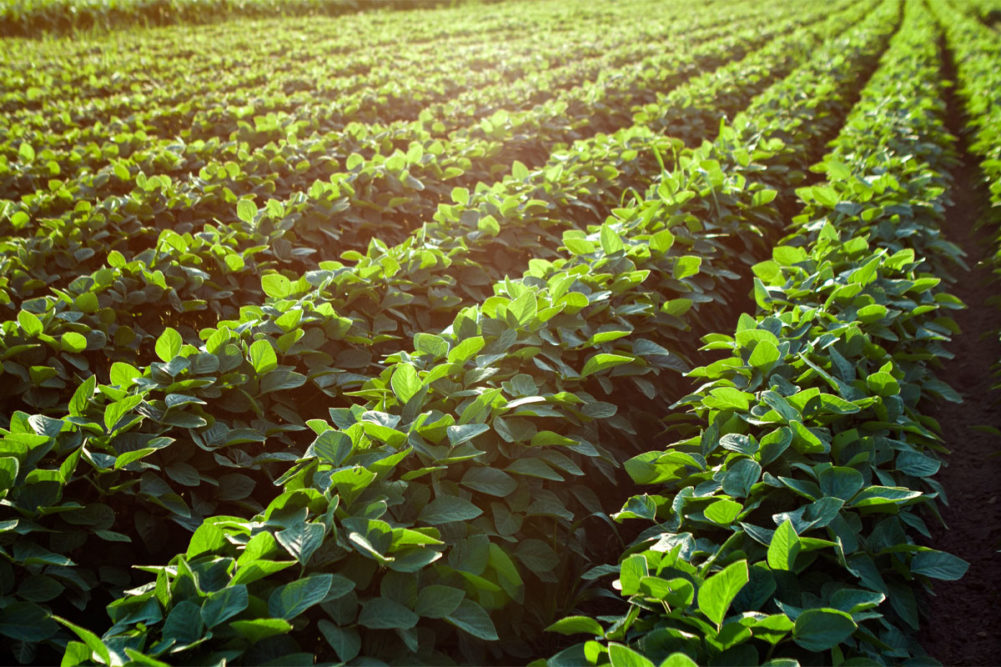KANSAS CITY — RaboResearch Food & Agribusiness in its recent “The Mighty US Crop Markets Through 2030” report, projected increased domestic use and declining exports for the three major US crops — corn, wheat and soybeans. Further, rising demand for soybean oil from the renewable fuels sector may allow soybean acreage to overtake corn area.
“In 2023-24, corn will continue to be king when it comes to area planted, though we expect soybeans to steal the throne in the coming years to meet future soybean oil demand for renewable diesel,” RaboResearch said, noting that current farm economics and agronomic conditions still favored corn over soybeans.
Combined area of corn, soybeans and wheat has struggled to “break” the historical 230 million acre record.
“The three crops’ failure to surpass this acreage threshold is concerning, especially at a time of historically higher commodity prices,” RaboResearch said. “Without planted area growth, the only growth component left is yields. Acres appear to be maxed out under current conditions, meaning the battle for acres will intensify, particularly if and when new demand emerges.”
The new demand at hand appears to be from the renewable diesel sector for soybean oil, thus more soybean acres are needed. Granted, renewable fuels mandates from the Environmental Protection Agency were below lofty trade expectations in December and again in June, but forecasts for that demand haven’t gone away with multiple processing facilities under construction or on the drawing board.
“We believe one of the main factors likely to structurally change and direct the sector, particularly from 2024 onward, is new US soybean crushing capacity to meet future soybean oil demand for renewable diesel,” RaboResearch said.
Soybean crush capacity has been expanding since 2021, but most of the expansion will take place from 2023 through 2027 with the addition of 620 million bus by the 2026-27 crop year. That would be nearly a 30% increase from the US Department of Agriculture’s forecast soybean crush of 2,220,000 bus in 2022-23.
RaboResearch expects the additional soybean supply to meet future renewable diesel demand will come from increased soybean acreage and lower exports, assuming trendline yields. Without the addition of total planted acres, the additional soybean acres would come from other crops, especially corn, which may decline to 88 million acres by 2026-27, the report said.
Along with soybeans, the share of domestic demand for corn and wheat is expected to increase in the coming years, to some extent due to lower exports.
“The US share of global export markets will likely decrease due to growing domestic demand, especially for soybeans,” RaboResearch said. Stocks for all three commodities were forecast to “marginally recover” from current low levels but remain low compared to historical levels.
“While domestic demand has been solid, export markets have been more challenging for US crops,” RaboResearch said. “This is the result of ever-increasing crops in South America, large Russian wheat production and high US prices compared to export competitors. We expect global market uncertainty to be a constant against relatively stable and potentially increasing domestic demand.”
Domestic demand was becoming less sensitive to prices, with RaboResearch projecting commodity prices will remain above 10-year averages but below 2022-23 highs in the coming years.
“Global markets are likely to buy less from the United States due to high domestic demand and the resulting high domestic prices, which will likely be uncompetitive in the global export markets.”
US wheat exports have declined for decades to the point that the United States is considered a residual supplier to the global market with Russia the top wheat exporter. Brazil has overtaken the United States as the world’s largest soybean exporter, with China, the world’s largest soybean importer, indicating it favors to do business with Brazil. The United States remains the world’s largest corn exporter by far, but Brazil also is making inroads in that sector with recent record-high corn production and exports.
And, of course, US food manufacturers will have to contend with higher prices going forward should the projections come to fruition. RaboResearch noted that its outlook was not a forecast but rather a long-term projection of trends based on its internal baseline model.




